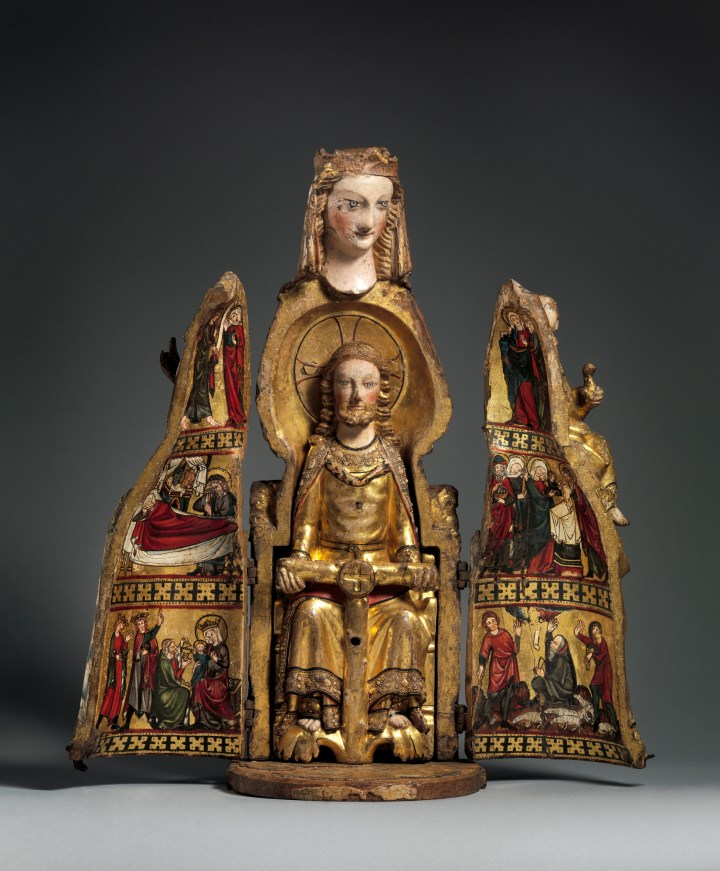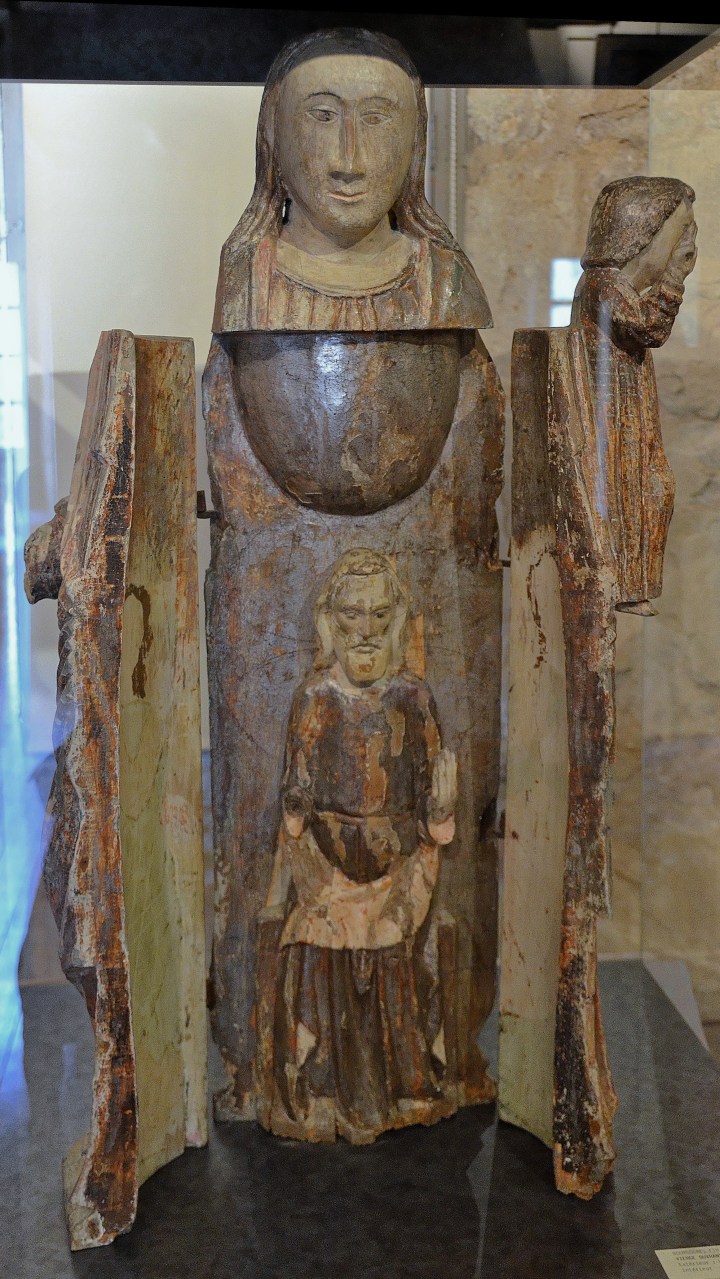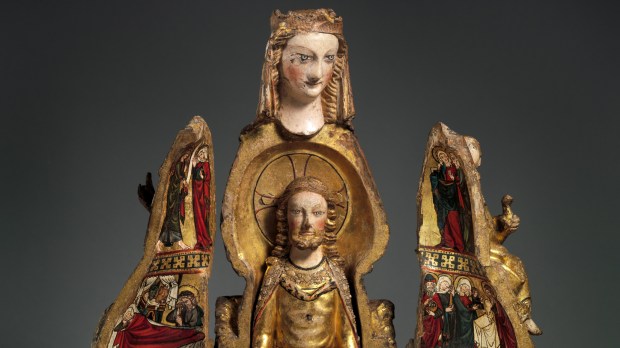Lenten Campaign 2025
This content is free of charge, as are all our articles.
Support us with a donation that is tax-deductible and enable us to continue to reach millions of readers.
From portraits of lactating Mary to the Pietas, artistic representations of the Virgin Mary have taken many shapes and forms over the centuries. But during the Middle Ages, the Blessed Mother was the subject of a rare form of art that most of us have probably never heard of: the vierge ouvrante, literally the “Opening Virgin” in French.
Found mostly in Germany, Spain and France and completed in the period between the 13th and 16th centuries, these rare works of art were used as devotional items in private shrines or churches. During most of the year, they looked like “regular” statuettes, made of wood and ivory. But on certain occasions, such as Marian or Trinitarian festivities, they would be opened, revealing a work of art within the work of art. As noted by the Khan Academy, their interiors replicate the structure of northern altarpieces. But unlike those altarpieces, the works of art contained an ”opening Virgin Mary” inside, and were not two-dimensional but three-dimensional figures.
According to Melissa Katza, an art historian, of the only 72 of these statuettes that have been found, from small pieces to life-size figures, 44 have been cataloged. The most prominent example of vierge ouvrante is currently kept at the Metropolitan Museum of Art in New York. Made in the Rhine Valley around 1300, the Shrine of The Virgin has fascinated art historians for centuries.

On the outside, the piece shows a classic depiction of Mary breastfeeding the Christ child. Once opened, it reveals an altarpiece showing a representation of the Trinity. Originally, the figure of God the Father, still preserved today, was holding a crucifix with the figure of Christ and that of a dove–this latter standing as a representation of the Holy Spirit. As explained by the Khan Academy, the Throne of Trinity is also the subject of one of the most famous early Renaissance paintings by Masaccio, titled “The Holy Trinity with the Virgin and Saint John,” hosted in Santa Maria Novella Church in Florence. On the sides of the statuette, decorating the interior of its “doors,” we find painted scenes of the Nativity.
Another prominent example of “vierge ouvrante,” a wooden statue of the Virgin Mary that once opened reveals Christ, is found at Rolin Museum in Autun, France.

As these two examples show, the constant element of “vierges ouvrantes” was the exterior part, depicting the Blessed Mother. But once opened, each statuette could contain different subjects, from the Trinity to episodes of the life of Christ. For this reason, “vierge ouvrantes” constituted an important art history innovation, allowing artists to find new ways to express the relationships between the Blessed Mother and other holy figures.
These statuettes inspired many interpretations of their spiritual meaning. Most art historians agree that those showing the Trinity in their inner part stand as a powerful symbol of the relationship between the Church (Mary) and the divine (the Trinity).
Statuettes showing an inner “Christ” also had a deep symbolic meaning. Shira Brisman, professor of early modern art in the University of Pennsylvania, suggests that these pieces can be seen as symbols for the way Mary acts as an intercessor between Christ and humankind and her doubled duty. As she explained to Erudition Magazine, the “vierge ouvrante” stands both as “the gateway through which Christ passed into the world” and at the same time as “the gate through which the elect will pass into heaven.”
It is believed that the “vierges ouvrantes” played a central role in rituals between the 13th century until the Council of Trent (1545-1563). But some time after the Counter-Reformation, the practice was abandoned, perhaps due to disagreements on the orthodoxy of its representations.
Today, these rare and ancient devotional objects are precious portals to the way medieval believers viewed the Virgin Mary, as a bridge between humans and the divine.

